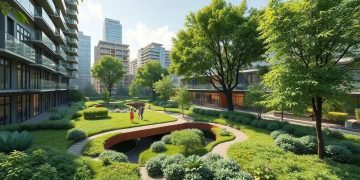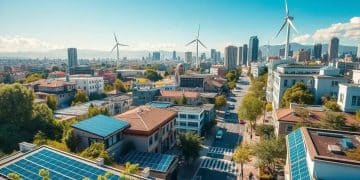Green infrastructure headlines – emerging trend
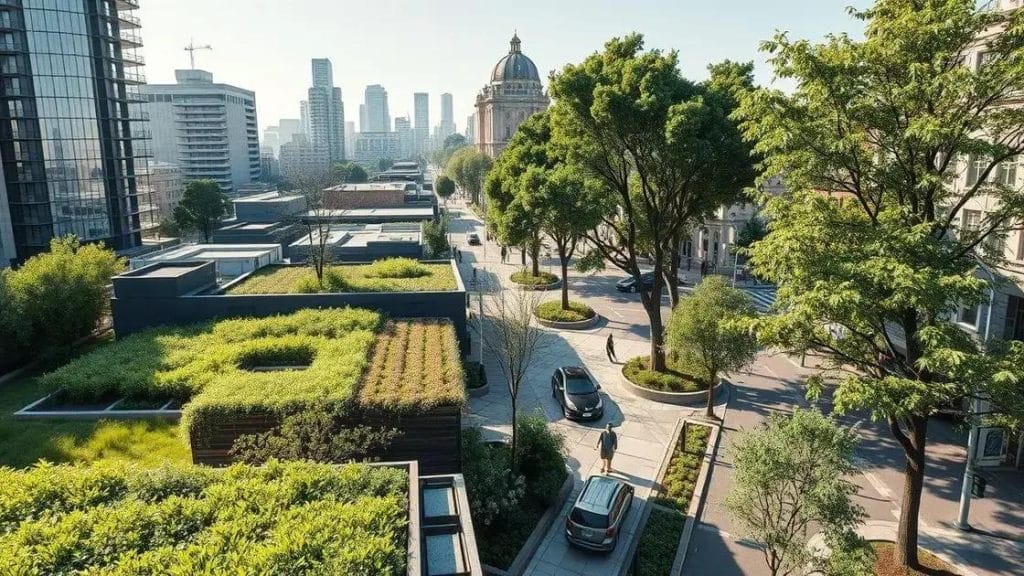
Green infrastructure enhances urban sustainability by integrating natural elements, such as green roofs and rain gardens, which help manage stormwater, improve air quality, and boost community well-being.
Green infrastructure headlines are becoming increasingly significant in today’s urban planning discussions. As cities face challenges like climate change and population growth, innovative solutions are essential. But how does this emerging trend shape our environments?
Understanding green infrastructure
Understanding green infrastructure is crucial for creating sustainable urban spaces. This concept involves utilizing natural processes to manage stormwater, enhance biodiversity, and improve the quality of life in cities. By integrating nature into urban planning, we can develop more resilient environments.
Definition and Importance
Green infrastructure refers to a network of natural and semi-natural features designed to provide ecosystem services. These include parks, green roofs, and rain gardens. Each component plays a vital role in mitigating environmental issues.
Key Benefits
- Stormwater management: Reduces flooding risks by allowing rainwater to soak into the ground.
- Enhanced biodiversity: Supports wildlife habitats and promotes diverse plant species.
- Urban cooling: Lowers temperatures in cities, combating the heat island effect.
- Improved public health: Provides spaces for recreation and relaxation, enhancing mental well-being.
Implementing green infrastructure can transform urban areas into healthier spaces. For instance, incorporating green roofs not only helps with insulation but also reduces energy consumption. Understanding these features allows communities to make informed decisions about their development.
The role of community involvement cannot be overlooked. Engaging residents in the planning process helps ensure that the green spaces meet their needs. Additionally, educational programs can raise awareness about the benefits of adopting green infrastructure practices.
Successfully designing these systems requires collaboration between urban planners, environmentalists, and the public. By working together, cities can adapt to changes and enhance resilience against climate challenges. As we delve deeper into the myriad of strategies and designs available, one thing remains clear: leveraging nature is key to building sustainable cities.
Key benefits for urban environments
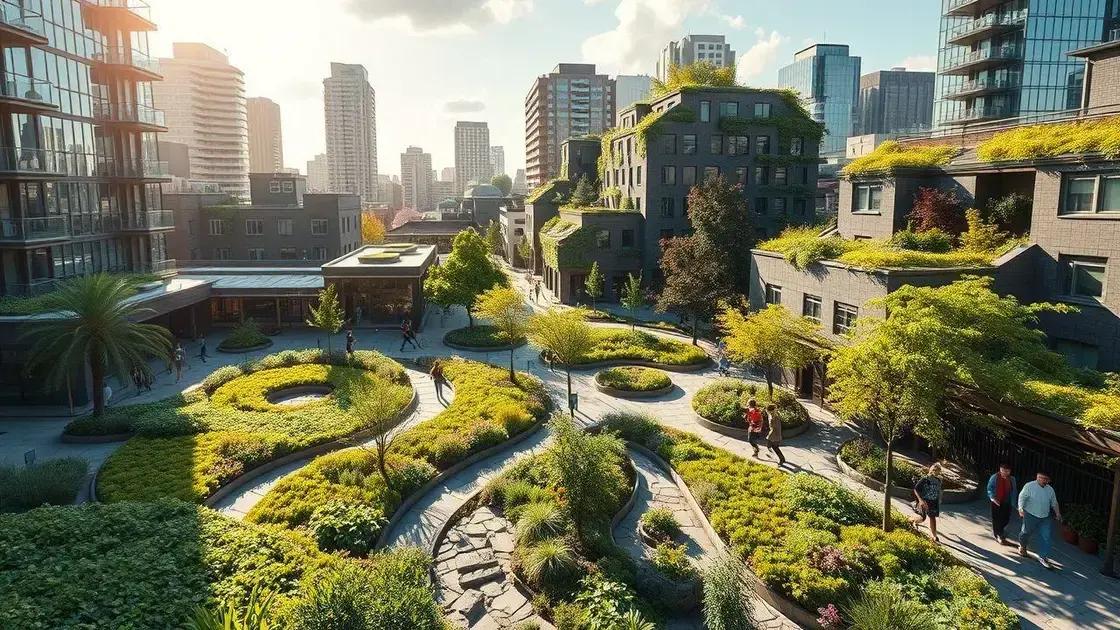
Understanding the key benefits of green infrastructure for urban environments can significantly influence how cities develop. Cities face many challenges, from flooding to air pollution, and incorporating green infrastructure provides effective solutions.
Environmental Advantages
One major benefit of green infrastructure is its ability to improve environmental quality. When cities use natural solutions like trees and green roofs, they can reduce air pollution effectively. This creates cleaner air for everyone.
Social and Economic Benefits
- Enhanced property values: Homes near parks or green spaces often see increased value.
- Job creation: Green projects can create many jobs in construction and maintenance.
- Community health: Access to green spaces promotes physical activity and mental well-being.
Additionally, cities that prioritize green infrastructure often attract more residents and businesses. People are drawn to areas that are not only livable but also sustainable. As a result, local economies prosper.
The implementation of green infrastructure also assists in managing stormwater. Rain gardens and permeable pavements help reduce flooding. When storms hit, these solutions absorb water, preventing overwhelming the drainage systems.
Urban wildlife benefits as well. Creating habitats fosters biodiversity, leading to healthier ecosystems. Birds, bees, and other species thrive when we incorporate more greenery in urban areas.
Emerging trends in sustainable design
Emerging trends in sustainable design are reshaping how we think about eco-friendly living and urban environments. As more people recognize the importance of sustainability, innovative design practices are gaining traction.
Biophilic Design
One trend that has gained popularity is biophilic design, which incorporates natural elements into built environments. This approach not only improves aesthetics but also enhances well-being. Spaces filled with plants, natural light, and organic materials promote a closer connection to nature.
Smart Technology Integration
- Energy-efficient systems: Buildings are increasingly equipped with smart technology that optimizes energy use.
- Smart grids: These systems manage electricity supply more efficiently, adapting to real-time demand.
- Water conservation: Innovative fixtures and systems help reduce water waste in homes and public spaces.
The integration of smart technology allows for better monitoring and management of resources. This not only saves costs but also reduces overall environmental impact. For example, smart thermostats and energy management systems ensure that buildings use only the energy they need.
Another important trend is the use of sustainable materials. More architects and designers are opting for recycled and locally sourced materials in their projects. This reduces transportation emissions and supports local economies, making a positive impact on both the environment and community.
As cities continue to grow, vertical gardens and green walls are emerging as popular solutions for urban areas. These features help improve air quality and provide habitats for wildlife while utilizing limited space efficiently. Incorporating greenery into high-rise buildings offers urban dwellers a slice of nature in their everyday lives.
Real-world applications of green infrastructure
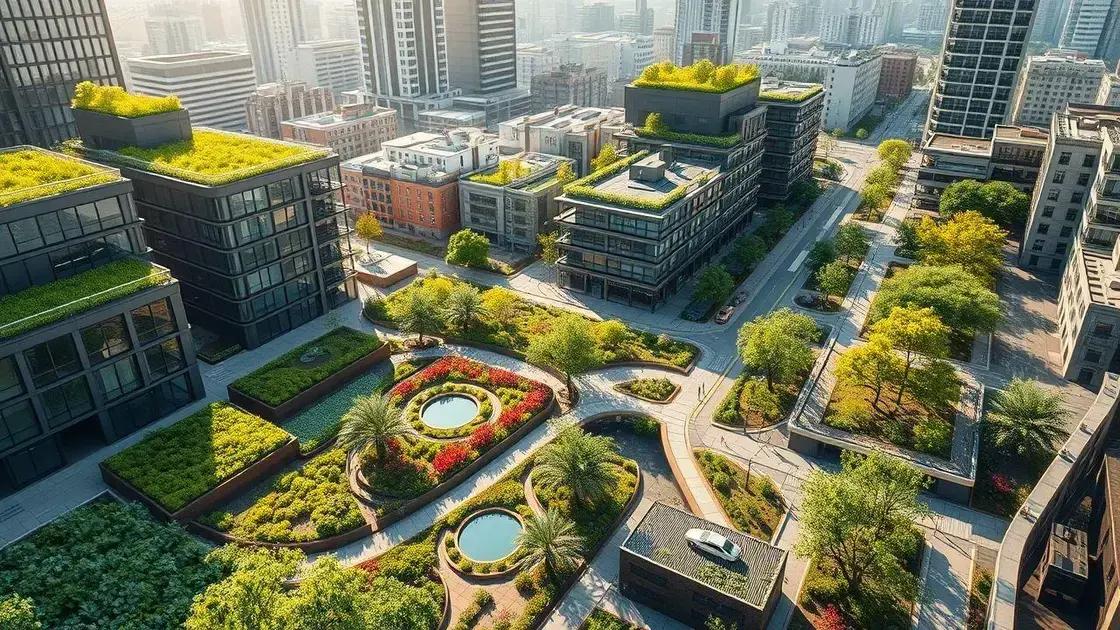
Real-world applications of green infrastructure illustrate its growing importance in urban design. Cities around the world are adopting these strategies to improve sustainability and enhance community well-being. By looking at successful examples, we can see how these approaches make a difference.
Green Roofs
One popular application is the use of green roofs. These roofs are covered with plants and vegetation, which help insulate buildings and manage stormwater. In cities like Chicago, green roofs are not just practical; they also create beautiful spaces for residents and wildlife alike.
Rain Gardens
- Stormwater management: Rain gardens capture runoff, allowing it to filter into the ground instead of overwhelming drainage systems.
- Pollinator habitats: These gardens support bees and butterflies, enhancing local biodiversity.
- Aesthetic appeal: Well-designed rain gardens beautify neighborhoods while providing ecological benefits.
Another effective solution is the creation of rain gardens. These shallow, planted depressions soak up rainwater from roofs and driveways. They reduce flooding and improve local water quality while providing a habitat for pollinators. Cities like Portland and Seattle have implemented such gardens extensively, showcasing their effectiveness.
Urban parks that incorporate natural features—like wetlands and native plants—also serve as excellent examples. They provide recreational spaces for residents and play a crucial role in managing stormwater. Central Park in New York City is a prime example of how such green spaces can enhance urban living while offering vital ecological benefits.
Furthermore, permeable pavement is gaining popularity. This innovative material allows rainwater to infiltrate instead of running off into the streets. Various municipalities have used permeable pavements in parking lots and walkways, leading to reduced flooding and improved groundwater recharge.
FAQ – Frequently Asked Questions about Green Infrastructure
What is green infrastructure?
Green infrastructure refers to a network of natural and semi-natural features designed to manage stormwater, enhance biodiversity, and improve urban environments.
How does green infrastructure benefit cities?
Green infrastructure provides multiple benefits, including reducing flooding, improving air quality, enhancing property values, and promoting community well-being.
Can green infrastructure help with climate change?
Yes, by incorporating more greenery, cities can mitigate urban heat, increase resilience against extreme weather, and support biodiversity, all of which help combat climate change.
What are some examples of green infrastructure projects?
Examples include green roofs, rain gardens, permeable pavements, urban parks, and tree canopies, all contributing to healthier urban ecosystems.
